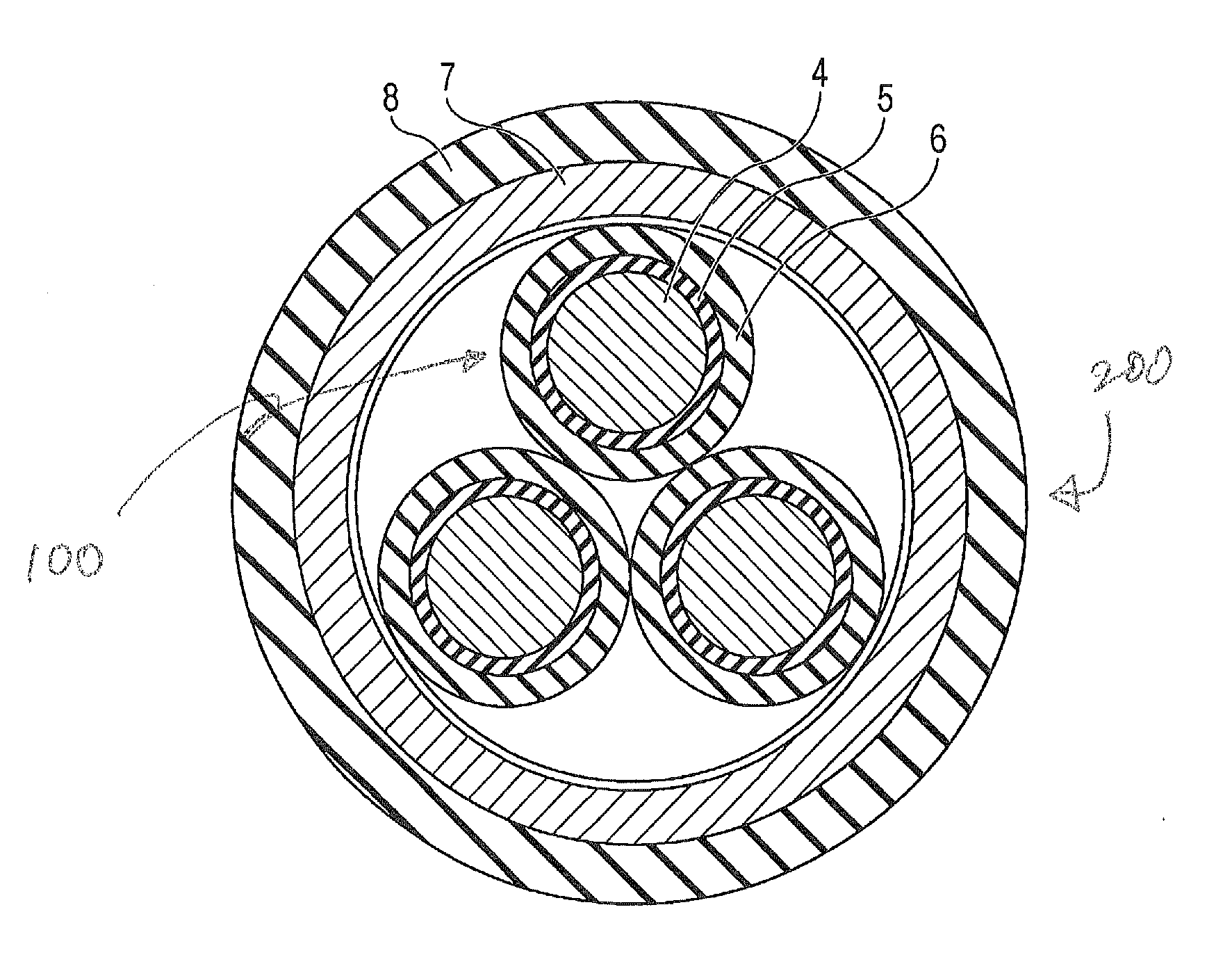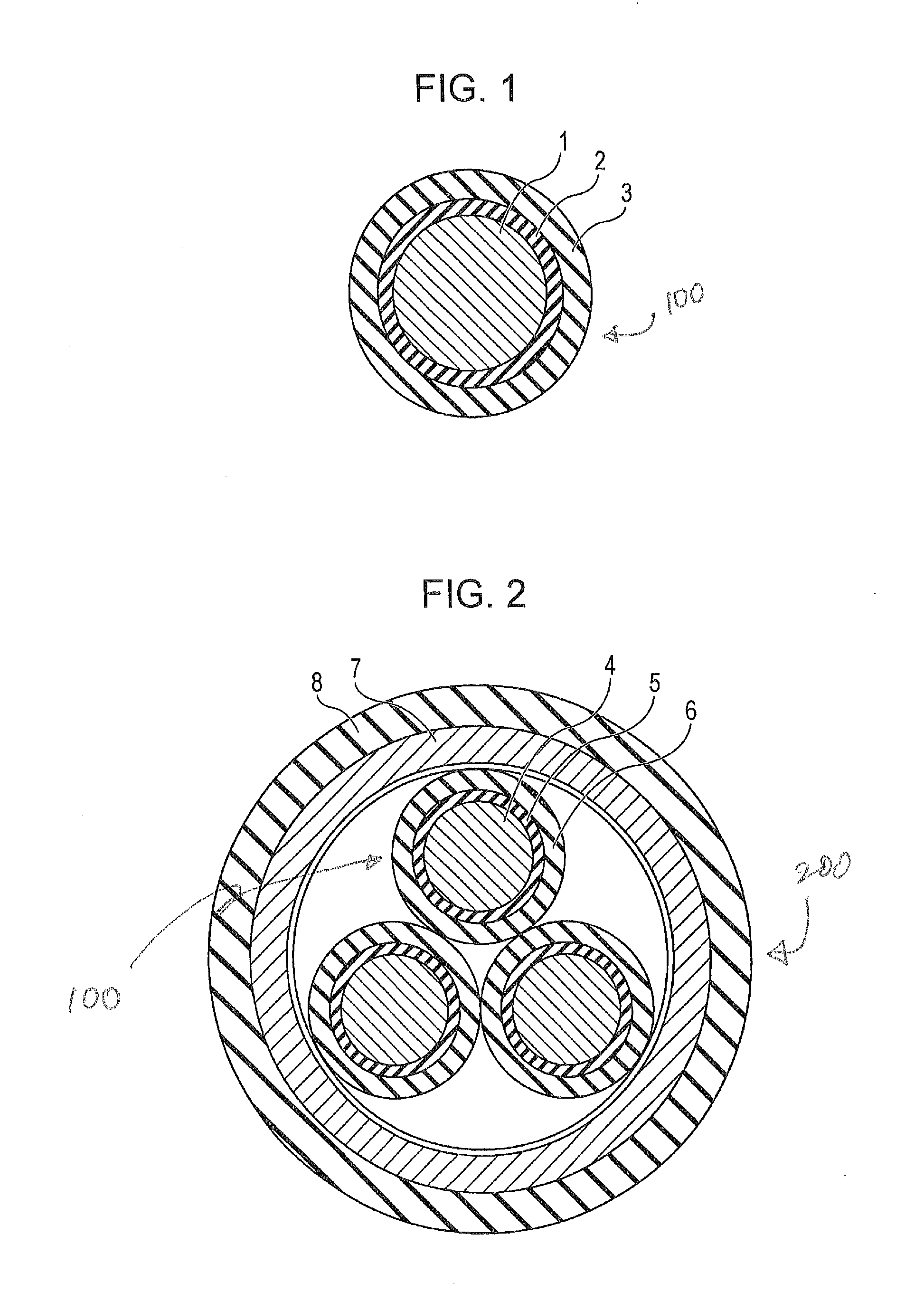Halogen-free flame-retardant polymer composition, insulated electric wire, and cable
a flame-retardant polymer and composition technology, applied in the direction of insulated cables, electrical equipment, textiles and paper, etc., can solve the problems of high toxic dioxin, high toxic and harmful gases, and the probability of tragedy of insulated electric wires and cables used in railway vehicles, so as to maintain flame retardancy, excellent electric characteristics, and maintain injury resistance
- Summary
- Abstract
- Description
- Claims
- Application Information
AI Technical Summary
Benefits of technology
Problems solved by technology
Method used
Image
Examples
examples
[0049]The halogen-free flame-retardant polymer composition, the insulated electric wire, and the cable of the present invention are described in further detail below with reference to examples. The present invention is not limited to the examples below.
[0050]An insulated electric wire and cable were formed as described below using a halogen-free flame-retardant polymer composition. That is, as shown in FIG. 1, the insulated electric wire 100 was formed by coating the periphery of each of a plurality of tinned-copper (e.g. tin-plated copper) conductors 1 with an insulator inner layer 2 and an insulator outer layer 3. In addition, as shown in FIG. 2, the cable 200 was formed by twisting together three insulated electric wires 100, which were formed by coating the periphery of each of a plurality of tin-plated copper conductors 4 with an insulator inner layer 5 and an insulator outer layer 6, covering the wires 100 with a metal braid 7, and then coating the braid 7 with a sheath 8. The...
PUM
| Property | Measurement | Unit |
|---|---|---|
| density | aaaaa | aaaaa |
| temperature characteristics | aaaaa | aaaaa |
| temperature | aaaaa | aaaaa |
Abstract
Description
Claims
Application Information
 Login to View More
Login to View More - R&D
- Intellectual Property
- Life Sciences
- Materials
- Tech Scout
- Unparalleled Data Quality
- Higher Quality Content
- 60% Fewer Hallucinations
Browse by: Latest US Patents, China's latest patents, Technical Efficacy Thesaurus, Application Domain, Technology Topic, Popular Technical Reports.
© 2025 PatSnap. All rights reserved.Legal|Privacy policy|Modern Slavery Act Transparency Statement|Sitemap|About US| Contact US: help@patsnap.com


